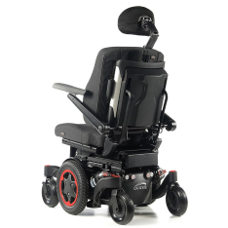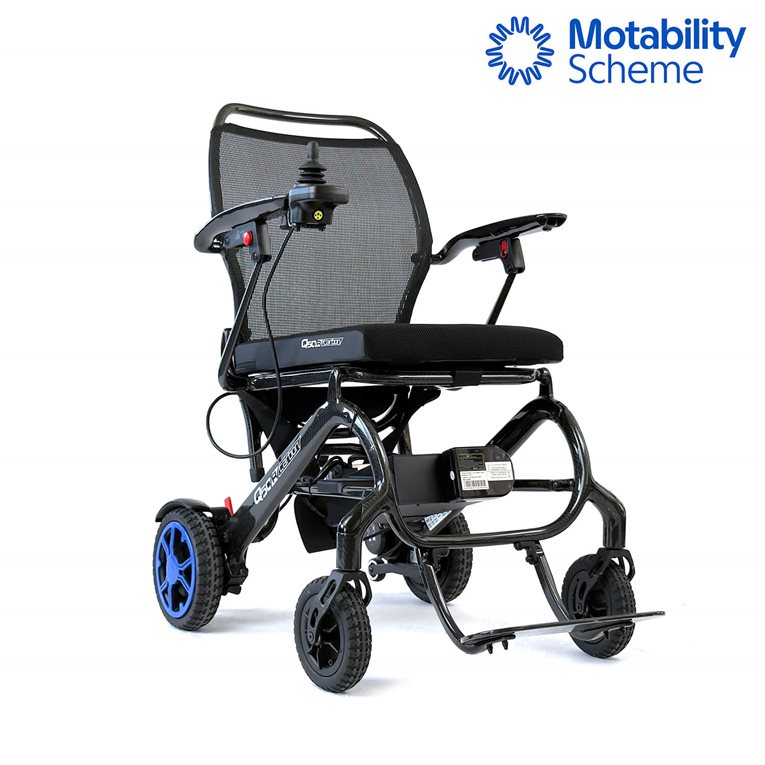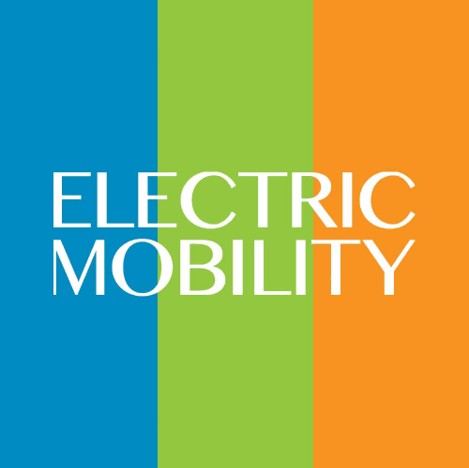


What is a Power Chair? Essential Guide to Power Wheelchairs
What is a power chair? A power chair, commonly known as an electric wheelchair, is a mobility device that provides independence for individuals with limited movement. It’s propelled by an electric motor rather than manual power, making it an essential tool for those with severe disabilities or long-term mobility issues. The chairs often come with a variety of features that cater to the specific needs of the user, such as customizable seating, control systems, and varying levels of support and mobility.
These versatile chairs are designed to improve the quality of life by enabling users to navigate various environments with ease. The maneuverability of power chairs allows users to perform daily activities more effectively, as they can move around obstacles and tight spaces. Different models accommodate various body types and disabilities, ensuring that users find a suitable match for their individual needs.
SHOP OUR BRILLIANT SELECTION OF POWER WHEELCHAIRS HERE
Power Chairs Overview
Power chairs, often known as power wheelchairs, provide mobility assistance to individuals facing challenges with walking due to various conditions. They offer a blend of autonomy and technological innovation.
Definition and Function
What is a power wheelchair? A power chair is a motorized device designed to assist individuals with mobility impairments. Unlike traditional manual wheelchairs, power chairs are propelled by electric motors and controlled by a joystick or alternative input device. They serve two essential functions: enhancing personal mobility and reducing the physical strain of manual propulsion. Power chairs often come equipped with rechargeable batteries and provide users with the freedom to move independently.
Types of Power Chairs
Power chairs vary significantly in design and function to cater to the diverse needs of their users. The following list highlights the primary categories:
- Travel Power Chairs: Compact and lightweight, they are designed for easy transport and are typically foldable or disassembled.
- Heavy-Duty Power Chairs: Built to accommodate higher weight capacities, these chairs offer reinforced frames and powerful motors.
- Center-Wheel Drive Chairs: Known for tight turning radii, they have a central drive wheel and are ideal for maneuvering in small spaces.
- Front-Wheel Drive Chairs: These have their drive wheels at the front, providing greater obstacle climbing capability and a smooth ride over rough terrain.
- Rear-Wheel Drive Chairs: With drive wheels at the back, they offer high-speed stability but require more space for turning.
Each type of power chair is tailored to different user needs, from indoor maneuverability to outdoor durability.
SHOP LIGHTWEIGHT POWER CHAIRS HERE
Features of Power Chairs
Power chairs, also known as electric wheelchairs or power wheelchairs, offer mobility solutions with various customizable features, control systems, and battery technologies. They cater to different user needs, from basic maneuverability to advanced capabilities.
Customization Options
Power chairs come with a range of customizable options to enhance user comfort and meet individual requirements. Seat size, cushion type, and backrest support can be tailored to the user’s body dimensions and specific needs. Adjustable armrests and leg rests ensure proper positioning and support. Furthermore, power chairs may offer various wheel types fit for different terrains, and color choices for personal aesthetics.
Control Mechanisms
The control system is a crucial aspect of power chairs, dictating their maneuverability. Users typically manage their chairs using a joystick, which can be mounted on the left or right side to accommodate dominant hand usage. For those with limited hand mobility, alternative controls such as:
- Sip-and-puff systems
- Head switches
- Chin controls
allow for precise navigation. Some models are equipped with smart technology options like Bluetooth connectivity to interface with other devices.
Battery Life and Charging
The battery system is the powerhouse of a power chair, determining how far and how long it can go between charges. Lead-acid, gel cell, and lithium-ion batteries are commonly used, each with different capacities and maintenance requirements.
- Lead-acid: Economical, requires regular maintenance
- Gel cell: Maintenance-free, less sensitive to temperature changes
- Lithium-ion: Lightweight, long-lasting, but more expensive
Average battery life typically ranges from 8 to 20 miles per charge, but it highly depends on the chair’s use, weight load, and terrain. Most power chairs come with a standard onboard charger, and charging is as simple as plugging the chair into a standard electrical outlet. Charge times can vary, usually taking between 2 to 12 hours to fully recharge.
SHOP OUR PORTABLE ELECTRIC WHEELCHAIRS
Benefits of Power Chairs
A power wheelchair, commonly known as a power chair, offers users with mobility challenges the ability to move with greater ease and less reliance on others. This enhances users’ lifestyle by providing them with a level of independence that manual wheelchairs might not offer.
Mobility and Independence
Power chairs are equipped with electric motors, enabling users to traverse longer distances without physical fatigue. They come with a variety of control systems, like joysticks or touchpads, which are beneficial for individuals with limited upper body strength or dexterity. These chairs often allow for navigation in tighter spaces, making them suitable for both indoor and outdoor use.
- Extended travel range: Battery-powered operation increases the distance one can cover without requiring a recharge.
- Ease of use: Simple controls make it easy to operate, turning, and reversing without assistance.
Comfort and Accessibility
The design of power chairs prioritizes comfort with options for customizable seating, such as contoured or pressure-relieving cushions. They accommodate various postural needs and are adjustable to fit different body types, enhancing the overall comfort for users.
- Ergonomic seating: Supports proper posture and decreases the risk of pressure sores.
- Adjustable features: Chairs can be fitted with adjustable armrests, headrests, and leg rests to suit individual preferences and needs.
Power chairs are also an essential tool for accessing environments that might be otherwise difficult to navigate, such as ramps or elevators. They often feature durable wheels and suspension systems to tackle a variety of surfaces and small obstacles.
Choosing the Right Power Chair
Selecting the right power wheelchair, commonly referred to as a power chair, involves careful consideration of individual needs and an evaluation process to ensure the best fit for the user’s lifestyle.
Factors to Consider
- Size and Weight: The user’s physical dimensions are critical. A power chair should accommodate their height and weight comfortably. Look for models with adjustable features for a custom fit.
- Indoor vs. Outdoor Use: The environment where the power chair will be used influences the choice.
- Controls: The user’s ability to operate a joystick or alternative control system should be assessed. Ensure they are intuitive and within easy reac








